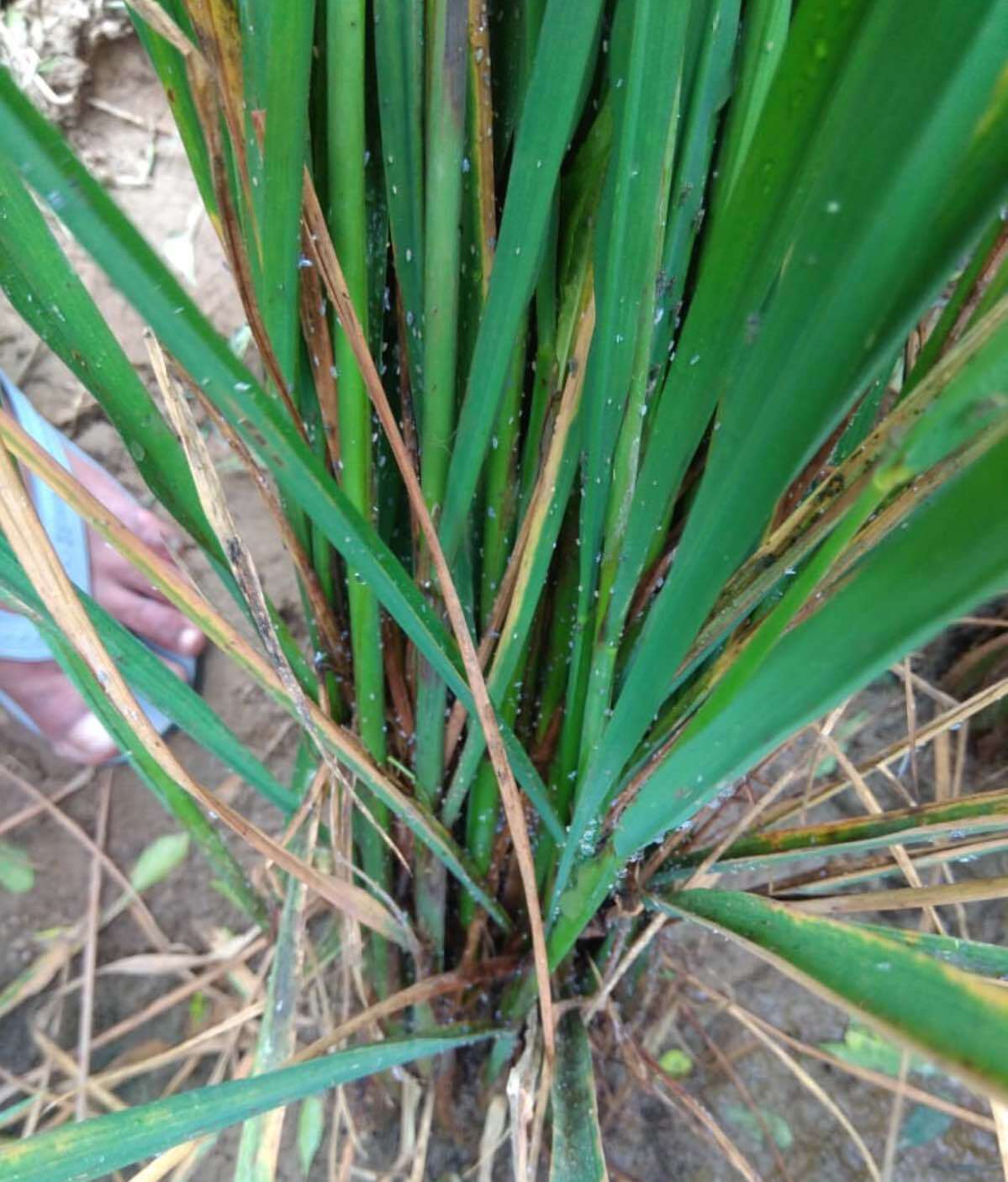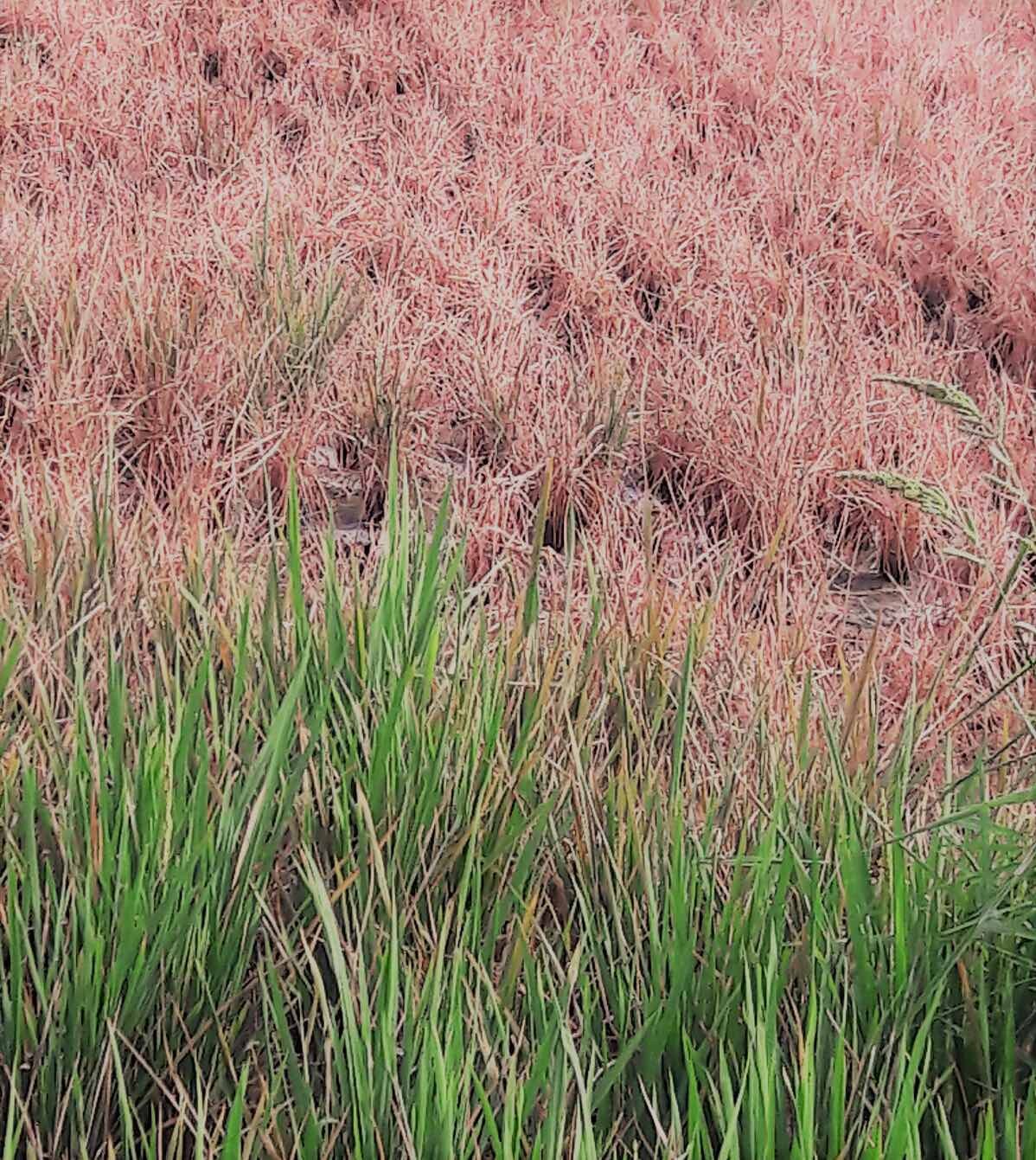Planthoppers
Rice and other grasses depending on the species
At low infestation levels: Yellow patches appear sporadically along leaves, and sooty mold is formed at the base of infested plants, where planthoppers are usually found.
At medium infestation levels: Whole plants turn yellow and begin to dry. As time progresses, the plants turn brown and dry up. Small brown zones of completely dried plants will be noticeable throughout the field. This is known as “hopper burn”.
At high infestation levels: Newly formed brown patches of dry plants connect, which results in the loss of large parts of the field.
Planthoppers and leafhoppers are serious pests to rice and have worldwide distribution. Leafhoppers feed on rice leaves and other parts of plants, which causes significant direct and indirect damage. Adult planthoppers develop various distinct wings that affect their ability to migrate. The initial stages of infestations usually occur at night during periods of hot and humid weather conditions. A low number of migrated adult females insert their eggs into leave tissues. Nymphs develop quickly and large populations can grow fast.
Maintain proper spacing between plants as narrow spacing can induce more intense planthopper infestations.
Monitor: It is easier and more cost effective to overcome infestations and successfully eliminate leafhoppers and planthoppers during the initial stage of infestation when population levels are low. Leafhoppers and planthoppers are most susceptible to insecticides during the nymphal stage. Make it a routine to monitor crops regularly and search plants for the presence of the above described symptoms.
Plant resistant varieties: Some rice varieties compared to other varieties are less susceptible to infestations; therefore, the varieties are rarely attacked. In regions where the presence of leafhoppers and planthoppers is known to be low, resistant varieties are often not necessary.
Maintain a healthy plant: Weak plants are more vulnerable to infestation than healthy plants. Therefore, adequate irrigation and fertilization regimes are important. However, excessive use of fertilizers, especially those containing nitrogen, can result in higher infestation levels.
Sanitation: Many weeds are hosts for leafhoppers and planthoppers. Clean weeds and wild grasses in and around the crops as often as possible. This is important since it can reduce the overall population of leafhoppers.
The following insecticides are used in one or more parts of the world: flonicamid, buprofezine, pymetrozine, bifenthrin, deltamethrin, lambda cyhalothrin, imidacloprid, thiamethoxam, acetamiprid, clothianidin, chlorpyrifos, dimethoate, and fipronil.
Note:
Some products are highly toxic for water organisms.
Spraying applications are easier after drainage, and moreover, chances of secondary infections rise at the presence of standing water.
Renew irrigation 1-2 days post application. When it comes to irrigation, a common rule in many places is to irrigate as hairline cracks appear on the surface of soil.
Neem oil or mineral oil can be applied.
Leafhoppers and planthoppers have several known beneficials predators that exist naturally in the field. Therefore, careful thought should be taken when planning to use the above chemicals marked in red. If the leafhopper population remains unchanged after a single application of one chemical marked in red, future applications could make the situation worse by wiping out the presence of beneficial insects within the field’s close surroundings.
*Names marked in red are considered to be highly poisonous to beneficial insects.
*Names marked in green are considered to be organic and IPM (integrated pest management) compatible.
Image Gallery

